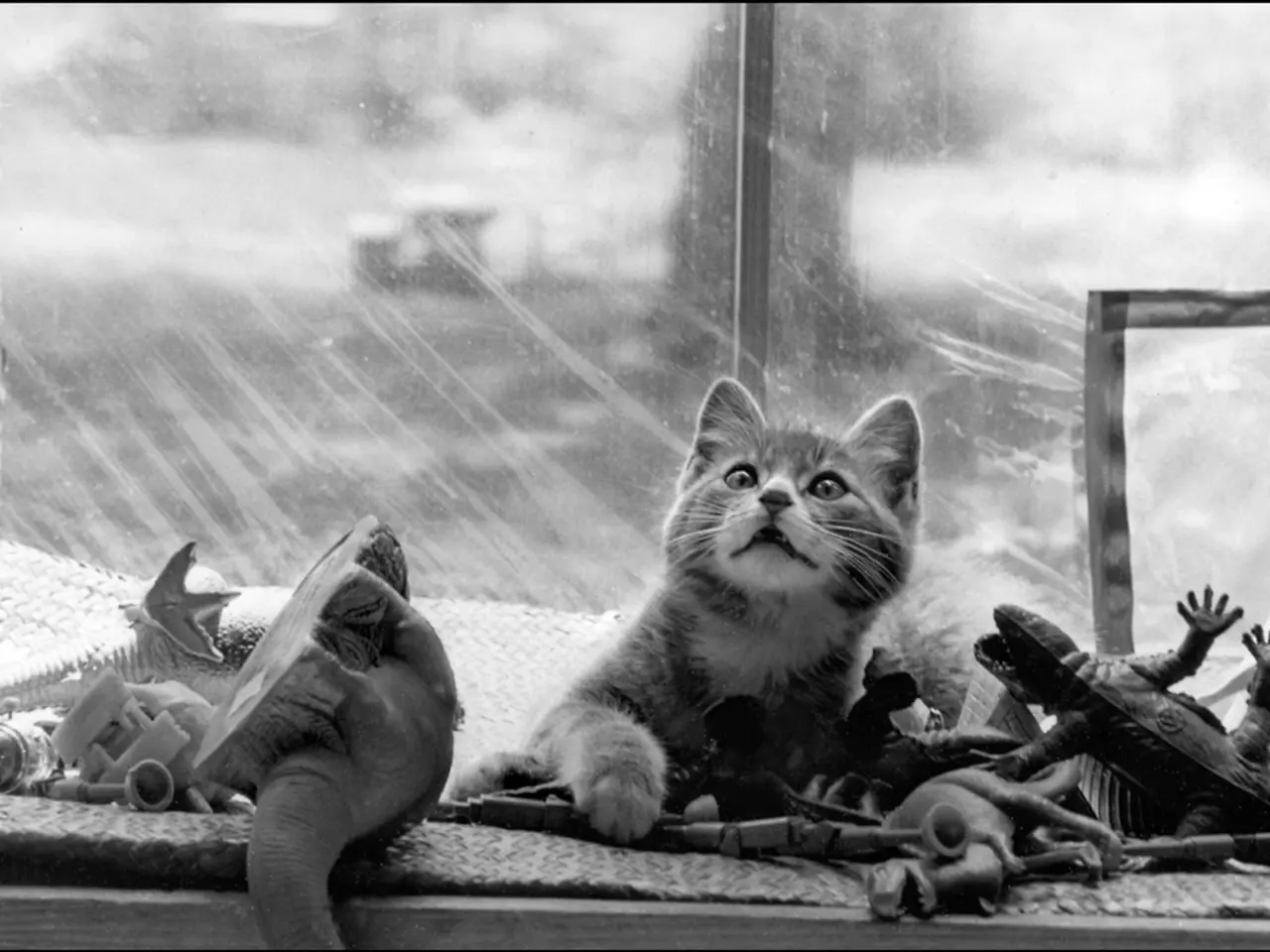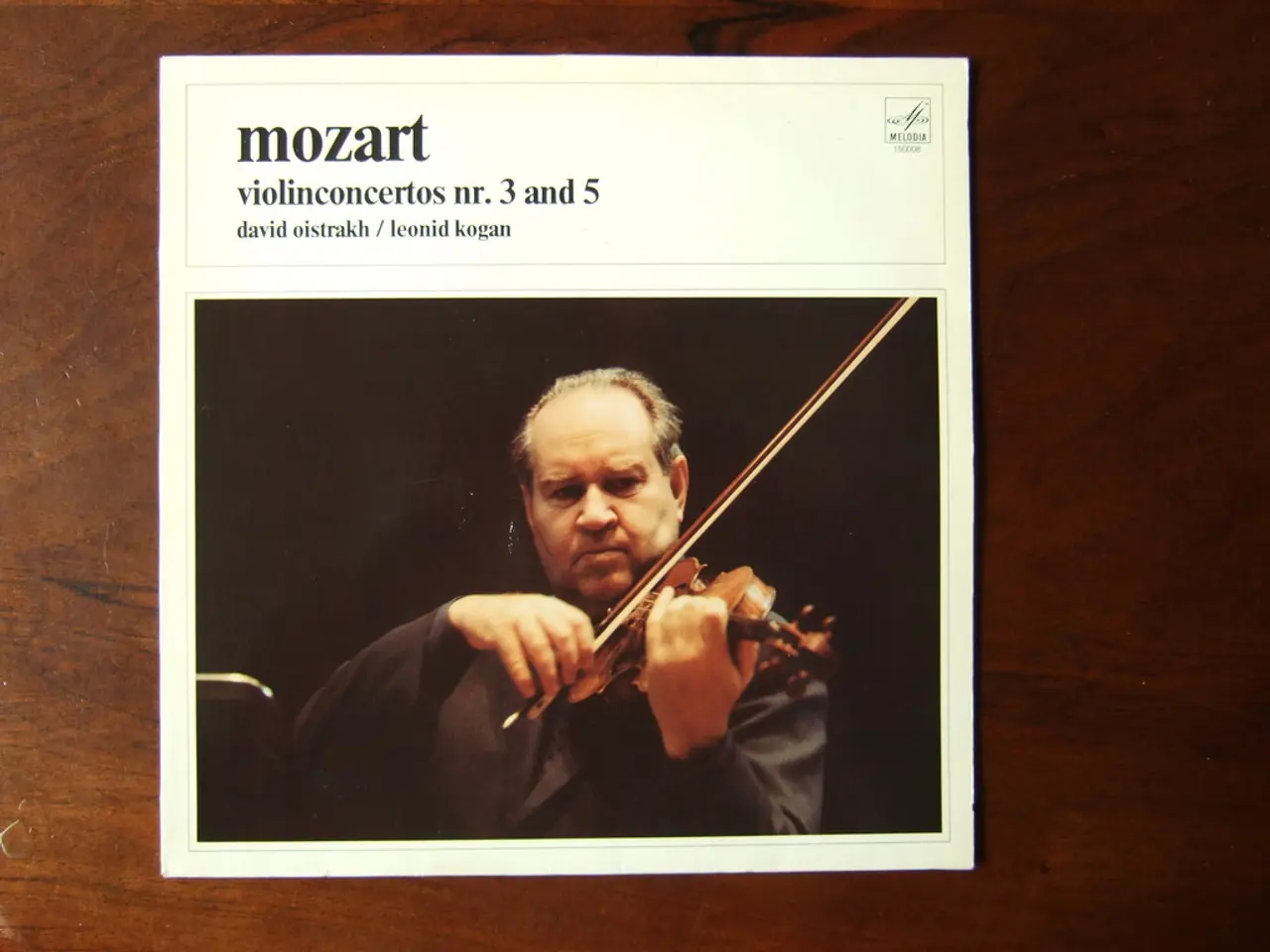Epic Cat-and-Mouse Chase Films Throughout Cinematic History
====================================================
Cat-and-mouse thrillers have been a staple in cinema for decades, captivating audiences with their unique blend of suspense, strategy, and psychological depth. These films, which emphasize a game of wits between two opposing forces, have evolved from early noir films to the complex narratives of today.
One of the key elements that contribute to the success of a cat-and-mouse thriller is the creation of strong, complex characters with emotional depth. A balanced development of both protagonist and antagonist creates a dynamic and unpredictable relationship, as seen in the TV series "Killing Eve" and the movie "Gone Girl" (2014).
Tense, claustrophobic settings or environments also play a crucial role in heightening suspense. Cold, labyrinthine interiors or confined spaces, like the house in David Fincher's "Se7en" (1995), make the audience feel trapped or uneasy, intensifying the tension.
Atmospheric sound design and production elements are another important factor in amplifying tension. Subtle, deliberate auditory cues like footsteps, breaths, or mechanical sounds, as noted in Fincher's carefully calibrated suspense and in "Mute Witness", enhance the suspense and mood.
A well-crafted plot with twists and unpredictability is essential in keeping viewers uncertain about outcomes and maintaining a brisk pace. Many cat-and-mouse thrillers blend psychological and crime thriller components to explore themes like obsession, desire, or moral ambiguity, as shown in "Strange Darling" with its unpredictable twists and raw vulnerability.
The use of power imbalance or vulnerability in characters also intensifies the danger and audience empathy. For instance, a protagonist with a physical handicap or disadvantage, like the main character in "Mute Witness" who can't speak, heightens tension.
Balance is crucial in a cat-and-mouse thriller, where the thriller is not only about who catches whom but also about exploring their personalities, motives, and moral complexities. This balance makes the "game" emotionally engaging as well as thrilling.
Iconic examples of cat-and-mouse thrillers include "The Fugitive" (1993), "The Silence of the Lambs" (1991), and "Se7en" (1995). Modern cat-and-mouse thrillers now delve deeper into character psychology and moral ambiguity, with hidden gems like "The Game" (1997), "Enemy" (2013), and "Tinker Tailor Soldier Spy" (2011).
Some memorable performances in the genre include Anthony Hopkins as Hannibal Lecter in "The Silence of the Lambs", Javier Bardem's portrayal of Anton Chigurh in "No Country for Old Men" (2007), and Steven Spielberg's "Catch Me If You Can" (2002) starring Leonardo DiCaprio and Tom Hanks.
In recent years, films like "Prisoners" (2013) and "The Girl with the Dragon Tattoo" (2011) have continued to push the boundaries of the cat-and-mouse thriller, showcasing the genre's enduring appeal and adaptability.
In conclusion, successful cat-and-mouse thrillers combine psychological complexity, immersive environments, sensitive sound and production design, unpredictable plotting, and compelling character dynamics to maintain relentless suspense and emotional investment.
Movies-and-tv, such as 'The Girl with the Dragon Tattoo' (2011) and 'Prisoners' (2013), fall under various genres including drama, horror, action, and thriller, showcasing the genre's adaptability. At film festivals, these gripping narratives aim to provoke both entertainment and thought-provoking discussions among audiences. More than just a game of wits, cat-and-mouse thrillers delve into the deep psychological complexities of characters, transcending the boundaries of their genres.







